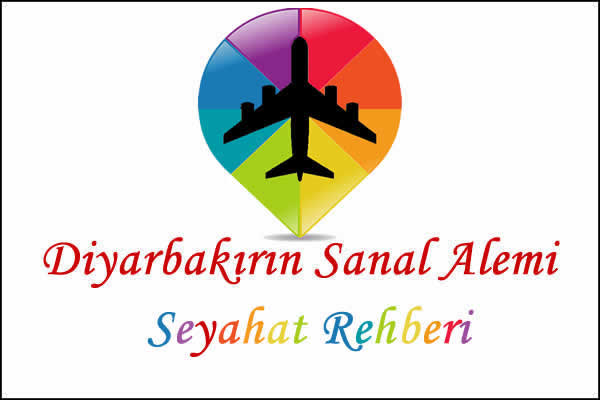
HAVARİLER KİLİSESİ (KÜMBET CAMİİ KARS)
Kars Castle: It is called as central castle or inner castle. Sources 12th century, the castle dates back to the 10th century. According to an inscription located in the center, it was built by Firuz Akay in 1152 under the order of Sultan İzzettin. Kaleyi In 1386, Timur was replaced by Lala Mustafa Pasha in 1579 with the order of III Murat. After that, in 1616 and 1636, some structures were added to the fortress, which had been repaired twice. Outside the castle was built in the 12th century at the outer castle surrounding the city. The ruins of the outer fortress can not be seen from the ruins.
KARS KALESİ PLACES WHICH CAN BE SEEN FROM THE KARS
JANUARY (ANI): The ancient city Ani is located 48 km east of Kars. The Arpacay Valley, which naturally forms the Armenian border line in the east of the city, and the Alacay Valley in the west.
The brightest epoch of the Ani city has been around 10-11 centuries. Ani was taken from Byzantium by Alparslan in Seljuk Sultan in 1064 and left to the administrative control of Menuçehr from Seddat Sons, who are from the Seljuks.
After the Ottoman-Russian war of 1877-1878, Ani enters the Russian control.
The walls surrounding the city of Ani were built by Ashot III in 972. It was later restored by Simbat II on the eastern walls between 977-990. In 11th Century, the walls were re-strengthened by Emir Menuçehr and adorned with Seljuk motifs. The length of the north walls is 2500 meters and the height is 8.10 meters.
THE WAYS IN ANCIENT CIVIL ENTRIES
Some of the historical monuments in the Ani city that remained up to date.
1. Dragon tower: It was used as a hospital by Seljuks in the 12th century and it is the oldest hospital of Anatolia.
2. Menuçehr Mosque: The mosque built by Ani Emiri Menuçehr in 1072 attracts attention with its position. It is the first glass that the Seljuks built in Anatolia.
3. Selçuk Palace: It is located at the northwest end of Ani Ruins and is quite magnificent.
4. Embroidered Museum (Tigran Honentz Church): This building was built on a terrace overlooking the Arpacay Valley by Tigran Honentz.
HORTICULTURAL MUSEUM (Tigran HONETZ CHURCH)
5. Keseli Museum (Rescuer’s Church): It was built in 1035-1036.
6. Abugamrents Museum (Church of the Krikor Abugamrents): In 994, Ani’s hillside overlooking the Alacay valley was built by Krikor, his brother Hamza and his sister Seta.
7. Mary Main Museum (Mary’s Main Cathedral): The construction of the Virgin Mary’s Cathedral in the city center of Ani was begun in 939 by II Simbat and completed in 1001 by Katramida, the wife of I Gagik. The architect of the Virgin Mary’s Cathedral was architect Tiridates who restored Hagia Sophia in Istanbul after an earthquake.
FETHIYE MOSQUE (MERIEM MAIN CATEGORY)
8. Gagik Museum (Gagik Church): It was built by I Gagik in 1001 in the west of Ani.
9. Museum of the Apostles (Church of the Apostles): It was built in the 10th century in the name of four apostles.
ARPAÇAY: It is the most important animal production area of Kars. It is covered with meralar. The Arpaçay dam adds natural beauty to the surrounding area. Yellow fish and carp live in the sky.
SUSUZ: The Susuz waterfall located near the Susuz is worth seeing. In addition, spas near the Susuz are also good for rheumatic diseases.
DİGOR Oguz is a place where the locals enter Anatolia and live for a certain period of time. The famous Turkish poet Dede Korkut is believed to have lived in Digor. There are churches from the Middle Ages around Digor. Among them are the Five Museum (Five churches) located near Digor and the well-preserved Karabakh Museum (Mrin Church) located near Karabakh village.
KAĞIZMAN: Kağızman is famous for the rock paintings of the Neolithic tumulus located in Çamuşlu village. In addition, the Aras River Canyon, flowing from the west to the east, is located in the north of Kagizman, filled with wild, natural beauties. The beauties on this side can be seen by following the path of Kağızman Tuzluca.
FOLKLÖR: The people of Kars are very beautiful in terms of their dances, rhythm and aesthetics and must be watched when they come to Kars. Some of the folk dances that are generally played with male-pussy are: Enzeri, Terekeme, Military, Iğdır Bar, Ceylan, Şeyh Şamil, Kıvanç and Han women. It is played in the Kars provinces known throughout the country by the populace and loved by drums and zurna.
BUYING – INTERIOR: Kars rugs and carpets made from natural dyes are very famous. Local silver belts and various silver jewelery are typical souvenirs of Kars. The feather pillows made from goose down are extremely mild. In addition, Kars kaşar cheese and balı are very delicious.
SARIKAMIS: SARIKAMIŞ Kars is the center of winter sports. This region is one of the best places to make this sport in the world in terms of snow quality and ski slope. Kars Sarıkamış is located on a plateau with an elevation of 2200-2900 meters. All around it is covered with yellowish forests. Kars Sarıkamış is not only famous for its pine forests, but also for its tent hunting lodge and the Russian barracks buildings still in use. The area around Sarıkamış, famous for its shrub forests, offers very suitable environments for “ski safari” and “sled sightseeing” especially with Alpine and Northern discipline skiing applications. Skiing in Sarıkamış is a privilege.
SARIKAMIS SARICAM LIFTS
ARPAÇAY: It is the most important animal production area of Kars. It is covered with meralar. The Arpaçay dam adds natural beauty to the surrounding area. Yellow fish and carp live in the sky.
SUSUZ: The Susuz waterfall located near the Susuz is worth seeing. In addition, spas near the Susuz are also good for rheumatic diseases.